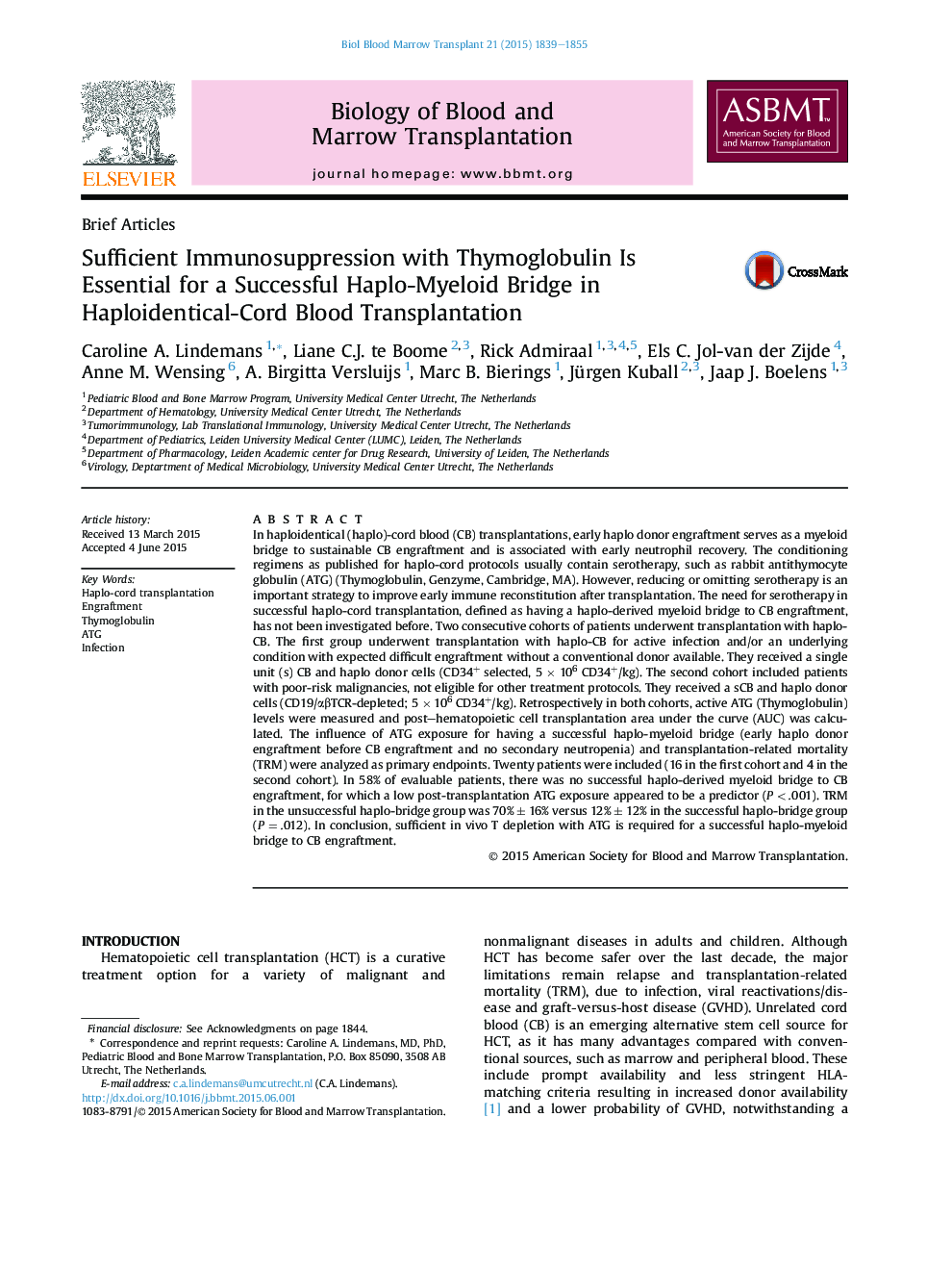| کد مقاله | کد نشریه | سال انتشار | مقاله انگلیسی | نسخه تمام متن |
|---|---|---|---|---|
| 2101326 | 1546262 | 2015 | 7 صفحه PDF | دانلود رایگان |
عنوان انگلیسی مقاله ISI
Sufficient Immunosuppression with Thymoglobulin Is Essential for a Successful Haplo-Myeloid Bridge in Haploidentical-Cord Blood Transplantation
دانلود مقاله + سفارش ترجمه
دانلود مقاله ISI انگلیسی
رایگان برای ایرانیان
موضوعات مرتبط
علوم زیستی و بیوفناوری
بیوشیمی، ژنتیک و زیست شناسی مولکولی
تحقیقات سرطان
پیش نمایش صفحه اول مقاله

چکیده انگلیسی
In haploidentical (haplo)-cord blood (CB) transplantations, early haplo donor engraftment serves as a myeloid bridge to sustainable CB engraftment and is associated with early neutrophil recovery. The conditioning regimens as published for haplo-cord protocols usually contain serotherapy, such as rabbit antithymocyte globulin (ATG) (Thymoglobulin, Genzyme, Cambridge, MA). However, reducing or omitting serotherapy is an important strategy to improve early immune reconstitution after transplantation. The need for serotherapy in successful haplo-cord transplantation, defined as having a haplo-derived myeloid bridge to CB engraftment, has not been investigated before. Two consecutive cohorts of patients underwent transplantation with haplo-CB. The first group underwent transplantation with haplo-CB for active infection and/or an underlying condition with expected difficult engraftment without a conventional donor available. They received a single unit (s) CB and haplo donor cells (CD34+ selected, 5 Ã 106 CD34+/kg). The second cohort included patients with poor-risk malignancies, not eligible for other treatment protocols. They received a sCB and haplo donor cells (CD19/αβTCR-depleted; 5 Ã 106 CD34+/kg). Retrospectively in both cohorts, active ATG (Thymoglobulin) levels were measured and post-hematopoietic cell transplantation area under the curve (AUC) was calculated. The influence of ATG exposure for having a successful haplo-myeloid bridge (early haplo donor engraftment before CB engraftment and no secondary neutropenia) and transplantation-related mortality (TRM) were analyzed as primary endpoints. Twenty patients were included (16 in the first cohort and 4 in the second cohort). In 58% of evaluable patients, there was no successful haplo-derived myeloid bridge to CB engraftment, for which a low post-transplantation ATG exposure appeared to be a predictor (P < .001). TRM in the unsuccessful haplo-bridge group was 70% ± 16% versus 12% ± 12% in the successful haplo-bridge group (P = .012). In conclusion, sufficient in vivo T depletion with ATG is required for a successful haplo-myeloid bridge to CB engraftment.
ناشر
Database: Elsevier - ScienceDirect (ساینس دایرکت)
Journal: Biology of Blood and Marrow Transplantation - Volume 21, Issue 10, October 2015, Pages 1839-1845
Journal: Biology of Blood and Marrow Transplantation - Volume 21, Issue 10, October 2015, Pages 1839-1845
نویسندگان
Caroline A. Lindemans, Liane C.J. te Boome, Rick Admiraal, Els C. Jol-van der Zijde, Anne M. Wensing, A. Birgitta Versluijs, Marc B. Bierings, Jürgen Kuball, Jaap J. Boelens,